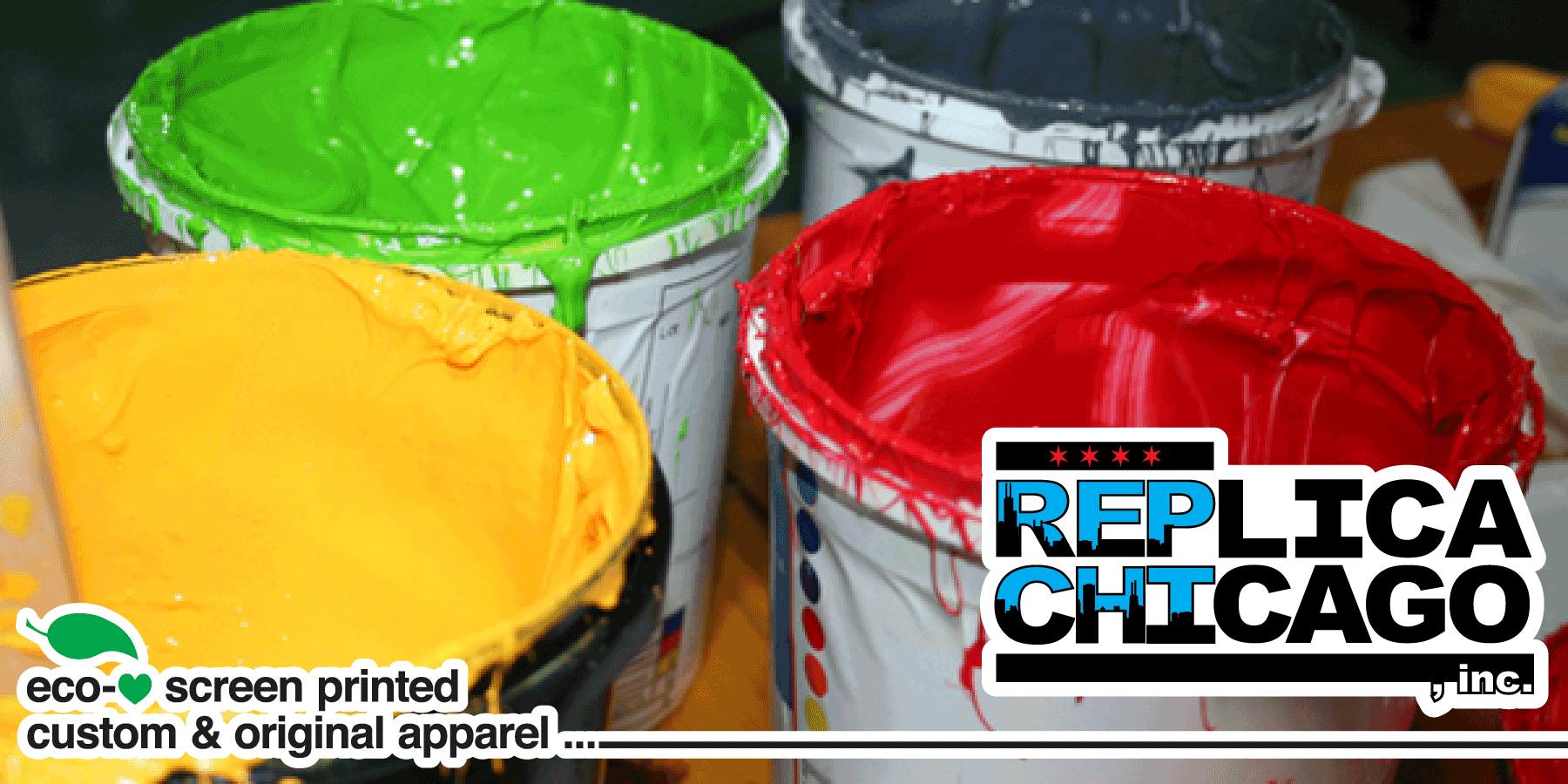Beginner-Friendly Screen Printing Kit for DIY Projects
Beginner-Friendly Screen Printing Kit for DIY Projects
Blog Article
Display Printing Uncovered: Whatever You Need to Find Out About Tee Shirt and Garment Printing Strategies
If you've ever questioned how those vivid designs finish up on your preferred t-shirts, you remain in the best place. Display printing is a remarkable technique that combines art with technique, offering endless opportunities for creative thinking. Understanding the fundamentals, from tools to ink selections, can substantially influence your outcomes. Prepared to check out the necessary components that make display publishing an art kind? Allow's discover the details that can boost your tasks.
The Essentials of Screen Printing: Exactly How It Functions
When you plunge right into display printing, you'll find it's both a science and an art. At its core, display printing includes developing a stencil, or screen, that enables ink to pass with just in details locations (screen printing kit). You begin by selecting your style and preparing your screen with a light-sensitive emulsion. Once you subject this emulsion to light, it hardens, leaving your design as an adverse room.
Next, you'll blend your inks and prepare your printing surface. Placement the screen over the fabric, after that make use of a squeegee to push ink through the display onto the garment. This procedure needs precision, as you desire clear, vibrant prints. After printing, you'll treat the ink with warm, ensuring it adheres to the textile and lasts via cleans. Each action is crucial, and understanding them will elevate your screen printing skills, changing basic garments right into distinct, expressive items.
Types of Display Printing Strategies
When you comprehend the essentials of display printing, it's time to explore the different techniques that can boost your designs. One preferred technique is typical display printing, where ink is pushed with a stenciled display.
Another option is plastisol printing, recognized for its durability and vivid shades, making it a favored for several brand names. Experiment with halftone printing to create slope effects and detailed designs.
Essential Equipment for Display Printing
To achieve sensational results in display printing, having the right devices is basic. You'll require a strong screen printing frame, which holds the mesh that moves your design onto the garment. Next, purchase premium mops; these are important for applying ink uniformly throughout the display. You'll likewise call for a good exposure system to develop your displays, as well as a washout cubicle for cleansing them after usage. A trustworthy heat source, like a conveyor clothes dryer or warm press, is essential for healing your prints to guarantee longevity. Do not forget an appropriate office, equipped with tables and storage space for your materials. Protective equipment, such as masks and handwear covers, will keep you risk-free from chemicals and inks. With the right tools, you'll be well on your method to generating professional-quality prints.
Selecting the Right Inks and Materials
When choosing inks and materials for screen printing, you require to think about the kind of ink that works best for your project. Think of textile compatibility to guarantee your layouts look last and great long. Discover green ink choices to make your printing procedure more sustainable.
Kinds Of Screen Inks
Choosing the best display ink is important for accomplishing vivid, long lasting prints that meet your job's requirements. There are a number of kinds of display inks to check out. Specialty inks, such as glow-in-the-dark or metallic, can add distinct effects to your layouts.

Textile Compatibility Factors To Consider
Recognizing textile compatibility is essential for attaining high-quality screen prints, particularly since different materials react uniquely to various inks. When picking inks, take into consideration the textile type-- cotton, polyester, or blends. For cotton, water-based inks work well, offering soft qualities and breathability. Polyester, on the various other hand, typically needs plastisol inks for better adhesion and vivid shades. If you're printing on blends, you might need to use a mix of both kinds. Constantly check your inks on sample textile to ensure they adhere effectively and keep shade integrity. In addition, maintain in mind that material weight and texture can influence the last result, so selecting the appropriate ink and product combination is essential for your job's success.
Eco-Friendly Ink Options
Environment-friendly inks are becoming a prominent selection for screen printers that desire to lessen their environmental influence while maintaining top quality. When choosing inks, take into consideration water-based inks, which are much less dangerous and simpler to clean up contrasted to standard solvents. These inks bond well with materials, delivering dynamic results without poisonous chemicals. You may likewise explore eco-solvent inks that use fewer unstable organic substances (VOCs), making them a more secure webpage alternative for both your wellness and the world.
Additionally, search for inks made from renewable sources, such as soy or vegetable-based alternatives. By selecting the right inks and materials, you'll not just develop stunning layouts but additionally add to an extra lasting printing procedure. Make the button, and your prints will mirror your dedication to the environment!
Preparing Your Style for Screen Printing

Submit Format Demands
To assure your layout looks vibrant and sharp on fabric, you'll need to pay close interest to file style demands for display printing. Make sure your style has a transparent background to stop undesirable white sides on your prints. Maintain shade settings in mind; CMYK is typical for display printing, so convert your RGB develops as necessary.
Color Separation Methods
Shade separation is an essential step in preparing your style for screen printing, and grasping it can greatly boost your print quality. You'll require to break your layout into specific colors, as each shade requires a different screen throughout printing. This precision not just ensures exact color representation yet likewise enhances the printing procedure.
Resolution and Size
Achieving the most effective results in screen printing starts with ensuring your style has the appropriate resolution and dimension. Preferably, your art work needs to go to least 300 DPI (dots per inch) for sharp, clear prints. Your last item may look pixelated and unprofessional. if you utilize lower resolution.
When it concerns size, think about the dimensions of your print location. Design your art work to match the last print dimension, preferably producing it in the real measurements you'll be printing. In this manner, you'll stay clear of any type of unexpected scaling issues.
Constantly examine your style in both vector and raster layouts. Vector graphics can be scaled without losing quality, making them optimal for screen printing. Preparing appropriately will ensure your design looks incredible on every garment!
Step-by-Step Screen Printing Process
Display printing is a vibrant procedure that permits you to develop vibrant designs on various surfaces. To get going, you'll need a screen, solution, and your selected ink. Prepare your screen by cleansing it thoroughly. Next off, apply the solution uniformly and allow it dry in a dark area. As soon as completely dry, expose your screen to light with your design positioned on it, which will set the solution where the light hits, developing a stencil - screen printing kit.
After rinsing the unexposed solution, your screen is all set. Set it up on your printing surface and straighten your garment beneath it. Put ink onto the screen and use a squeegee to press the ink through the pattern onto the textile. Raise the screen carefully and allow the print dry. Heal the ink making use of website link warmth to ensure resilience. That's it! You have actually effectively screen printed your layout.
Tips for Effective Screen Printing Projects
While you're diving right into your display printing jobs, bear in mind that preparation is key to success. Beginning by gathering all your products-- inks, mops, garments, and displays. A clean workspace helps prevent undesirable mistakes, so clean up before you begin.
Following, verify your artwork is high-resolution and properly sized for your garment. Check your screen for appropriate direct exposure and clean it completely to avoid spots. When mixing your inks, comply with the manufacturer's standards to achieve the appropriate uniformity.
During printing, apply also stress with your squeegee for constant results. Don't hurry; take your time to confirm each print meets your requirements. After printing, allow your garments dry entirely prior to dealing with or packaging them.
Lastly, always maintain a sample of your help future reference. In this manner, you can assess your progression and improve your strategies in time. Satisfied printing!

Frequently Asked Questions
The length of time Does It Require To Establish a Screen Printing Job?
Establishing a display printing work typically takes around 30 mins to an hour. You'll prepare the displays, mix inks, and readjust journalism. The moment differs based upon intricacy and experience, so remain arranged!
Can I Print on Different Fabric Keys In Using the Exact Same Strategy?
Yes, you can print on various fabric kinds utilizing the exact same technique, yet you'll require to change your inks and settings. Some materials absorb ink differently, so trying out assurances the very best outcomes for every product.
What Are Typical Mistakes to Stay Clear Of in Screen Printing?
When display printing, prevent common blunders like utilizing the incorrect ink, ignoring appropriate exposure times, or skipping pre-press checks. Constantly test your setup and preserve clean screens to guarantee top quality outcomes each time.
Just How Can I Properly Clean and Keep My Screen Printing Devices?
To appropriately clean and preserve your screen printing go to this website equipment, you should on a regular basis wash screens with appropriate solvents, inspect squeegees for wear, and guarantee all devices are saved completely dry and dust-free. Uniformity stops expensive repair work and improves efficiency.
Is Display Printing Environmentally Friendly Contrasted to Other Techniques?
Display printing can be a lot more eco-friendly than other techniques, specifically if you make use of water-based inks and eco-conscious products. By choosing lasting materials and techniques, you minimize waste and lessen your influence on the world.
Screen Printing Uncovered: Whatever You Need to Know About Tee and Garment Printing Methods
At its core, screen printing includes developing a pattern, or display, that permits ink to pass via only in specific locations. Placement the screen over the fabric, after that utilize a squeegee to press ink via the display onto the garment. One preferred technique is conventional display printing, where ink is pressed with a stenciled screen.When picking inks and products for display printing, you require to take into account the kind of ink that functions best for your job.
Report this page